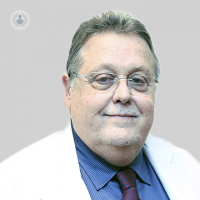Stroke: symptoms, treatment and risk factors
Written in association with:What is a stroke?
A stroke is a stroke. They can be hemorrhagic or ischemic. Bleeding refers to an intra-cranial hemorrhage from ruptured aneurysm of a blood vessel or. And are ischemic blockage of an artery. Generally, they can be from thrombosis or embolism. They are the leading cause of death and the third leading cause of permanent disabilities in the Western world.
What are the main risk factors?
The main risk factors for having a stroke, ischemic, ie, by occlusion of a cerebral artery, intra-cranial or extra-cranial, usually in addition to their own old age in which this type usually occurs events, smoking, hypertension, high cholesterol -especially ciphers of bad-cholesterol obesity, sedentary lifestyle, can also influence a number of cases of diabetes that affects a change in the arteries of the body and also contributes widely in many hypertension cases. So it is a closed circle where all the pathologies of circulatory origin can also cause problems in the circulatory system specifically the arteries supplying the brain.
What common symptoms allow detect?
We must be very attentive to any symptoms like we're going to see now because they are the first alarm reasons why you should immediately see a specialist. We have various types, some would be lower as pictures of small disorientation, small squares of memory loss, amnestic, but then we can have larger tables with establishment of a stroke which may have lost strength in arm, leg, you can have blackouts, there may be alterations in gait, loss of balance, the oral commissure deviation to one side or the other, partial or complete loss of vision in one eye, is also common for example loss of side vision, medium eye outwards eg. All these symptoms are those that should alarm and must be made to specialist immediately because they are very indicative of the first pictures, after onset of ischemic stroke or hemorrhagic stroke.
Will you determine early diagnosis treatment?
Of course, early diagnosis is essential for the proper treatment. Think that in Spain are between 150 and 200 cases of stroke each year per 100,000 population. Of these cases, 90 of the 100,000 will die, be with sequels and dependence within 6 months 17-18% of these, almost 30% (27 and something) left with permanent sequelae. Therefore, we have shown symptoms, see a specialist quickly and have a diagnosis that is easy because in addition to the symptoms the help of a simple Doppler ultrasound of supra-aortic trunks allows us to assess the extra-cranial cerebral irrigation, or practice of an MRI or scanner allows us to evaluate the quality of intra-cranial brain tissue or intra-cranial arteries. After treatment, whether or not surgery will be greatly benefited as earlier the diagnosis.




